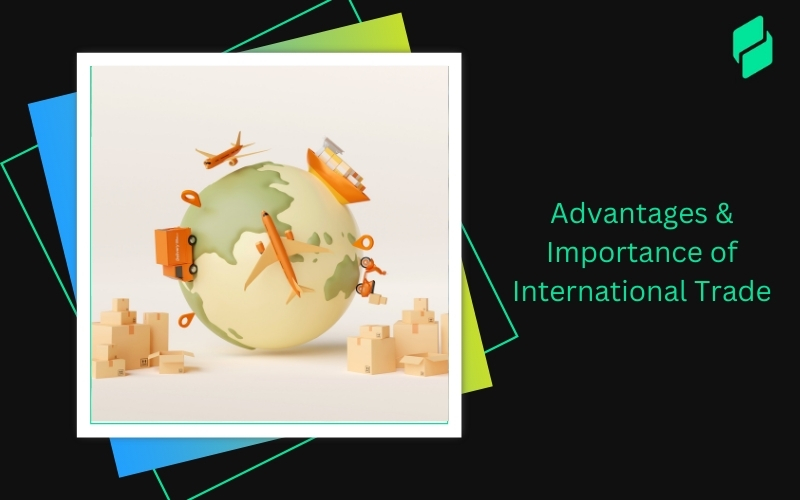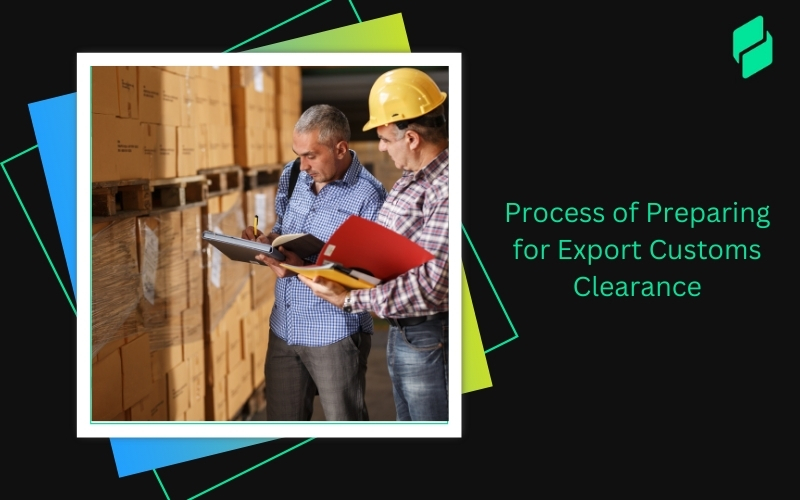Optimize your business: use unlimited savings with Pazago fulfilled now!
Get Started ->Have you ever wondered how much you could save by optimizing your shipping strategies? Reducing container shipping costs is not just a way to cut expenses but a crucial step toward operational efficiency and increased profitability.
Shipping is a significant part of your supply chain, and with rising global trade, managing these costs can make or break your business.
So, how do you start reducing container shipping costs? There are several proven strategies you can implement. From optimizing your freight forwarding to leveraging technology for better logistics, the right approach can lead to substantial savings.
Let's examine some best practices for minimizing shipping expenditures and boosting your bottom line.
1. Selecting the Right Shipping Terms to Reduce Cost
Ever felt confused by the myriad of shipping terms in international trade? Incoterms, or International Commercial Terms, define the responsibilities of buyers and sellers in the shipping process.
Knowing the right Incoterms can significantly reduce container shipping costs by clarifying who is responsible for various costs and risks during transit.
For instance, terms like FOB (Free on Board) and CIF (Cost, Insurance, and Freight) impact how costs are shared between you and your supplier. Understanding these terms can help you make informed decisions and avoid unexpected expenses.
Comparing Different Shipping Terms to Find the Most Cost-Efficient Option
To help you understand and compare the various Incoterms, here's a table summarizing each term, their responsibilities, and potential impact on shipping costs:
Are you unsure about the best Incoterms for your business? Let Pazago help you choose the most cost-efficient options tailored to your trade needs.
2. Choosing a Reliable Freight Forwarder to Reduce Container Shipping Costs
Ever wondered if a big freight forwarder is better than a small one? Choosing between large and small freight forwarders can significantly affect how you reduce container shipping costs.
Big agencies have extensive networks and resources, offering better rates and more options. However, they might lack personalized service and quick responses.
Smaller freight forwarders, on the other hand, provide more personalized service and flexibility. They may not have as many resources, but their customer-focused approach can lead to better communication and tailored solutions. Consider the benefits and challenges to find the right fit for your needs.
Market Research and Regional Expertise to Reduce Container Shipping Costs
Feeling lost when choosing the right freight forwarder? Doing thorough market research is key to reducing container shipping costs. Look for a forwarder with solid regional expertise. A forwarder familiar with local regulations and customs can help you avoid obstacles and streamline your shipping process.
Start by getting recommendations, reading reviews, and checking credentials. Choose forwarders with a proven track record in your key regions. Their local knowledge can reduce delays and unexpected costs, ensuring a smoother supply chain.
Also Read: Understanding the Freight Forwarding Process: Key Stages and Types
Strategic Partnerships with Freight Forwarders to Reduce Container Shipping Costs
Want to save money on shipping? Building a solid relationship with your freight forwarder can lead to significant savings. A close partnership gives you access to their expertise and resources, helping you reduce container shipping costs.
Working together, you can negotiate better rates, optimize shipping routes, and consolidate shipments. Your forwarder can also provide insights into market trends and cost-saving opportunities. Regular communication and collaboration lead to a more efficient and cost-effective shipping process.
Overpaying for your freight services? Pazago provides multiple quotes and strategic negotiation to optimize costs. [Negotiate with Pazago]
3. Optimizing Packaging to Reduce Container Shipping Costs
Another effective way is by optimizing your packaging. Here’s how:
- Use Every Inch of Container Space: Efficient packing reduces the number of containers needed, directly lowering your shipping costs.
- Modular Packaging Design: Create packaging that can be easily stacked and arranged within containers, maximizing space utilization.
- Advanced Packing Software: Use software like AutoCAD or TOPS Pro to design and visualize your packaging layout for optimal space usage.
- Collaborate with Suppliers: Work closely with your suppliers to standardize packaging sizes that fit well within containers.
Maximize the Product-to-Package Ratio
Are you making the most of your packaging space? Here’s why maximizing the product-to-package ratio is crucial:
- Fit More Products in Each Package: Avoid bulky packaging with too much space. You're paying to ship air.
- Use Custom Packaging Solutions: Tailored packaging that fits your products snugly allows you to ship more items in fewer containers, saving you money.
- Vacuum Packing: For products that can be compressed, use vacuum packing to reduce the volume of the goods.
- Multi-Pack Solutions: Combine multiple products into one package, reducing the overall packaging footprint.
Design Packaging with Cargo Dimensions in Mind
Align Packaging with Standard Container Dimensions: This avoids wasted space and inefficiencies.
- Think of It Like Tetris: The better your pieces fit, the more you can pack.
- Custom-Sized Packaging: Optimize your product dimensions for shipping to make the most of your cargo space. This reduces the number of containers needed, saving money and contributing to sustainability.
- Standardized Pallet Sizes: Use standardized pallet sizes that match container dimensions for efficient stacking.
- Collaborate with Freight Forwarders: Work with your freight forwarders to understand the best practices for container loading and packaging design.
Discover how optimized packaging can slash your shipping costs. Imagine saving money just by packing smarter. Simplify your trade operations and grow your business with Pazago.
Also Read: Dunnage: Its Importance, Uses, and Different Types in Shipping
4. Utilizing Freight Consolidation Services to Reduce Container Shipping Costs
Ever felt like you need to pay more for shipping because your containers are full? Combining less-than-container load (LCL) shipments into full container loads (FCL) is a game-changer.
When you consolidate your shipments, you maximize container usage, which helps reduce container shipping costs.
Think about it: instead of shipping partially filled containers, you fill them. This reduces the number of containers you need, leading to significant cost savings. Plus, it simplifies logistics and reduces the environmental impact of shipping.
Partnering with Other Cargo Owners to Split Shipping Expenses
Have you considered partnering with other cargo owners to reduce your shipping costs? By sharing container space, you can split the expenses and maximize usage. This approach reduces container shipping costs and fosters collaboration within the supply chain.
When you team up with others, you can fill up containers more efficiently, reducing the number of trips and cutting costs. It’s a win-win situation: you save money and build stronger business relationships.
- Freight Co-Ops: Join or form a freight co-op with other businesses. These cooperatives pool resources to fill containers and share shipping costs.
- Networking: Network with other companies in your industry to find potential shipping partners. Industry associations and trade groups can be good places to start.
- Online Platforms: Use online platforms connecting businesses seeking to share container space. These platforms match your shipments with others heading to the same destination.
Tired of paying for half-empty containers? Pazago offers seamless logistics, payment integration, and access to international clients. [Save with Pazago]
5. Leveraging Technology and Automation to Reduce Container Shipping Costs
Have you ever wished your shipping process was faster and more efficient? Implementing automated solutions can help you streamline operations and reduce container shipping costs. Automation takes over repetitive tasks, reduces human error, and speeds shipping.
Imagine using automated systems to handle booking, tracking, and documentation. These systems can keep everything organized and efficient. When you automate, you free up time and resources, allowing you to focus on other critical areas of your business.
Using Advanced Analytics to Optimize Operations and Reduce Costs
Are you leveraging data to its full potential? Advanced analytics can help you identify inefficiencies and optimize your operations, ultimately reducing container shipping costs. You can gain insights into shipping patterns, carrier performance, and cost structures with the right analytics tools.
Analyzing this data lets you make informed decisions, negotiate better rates, and optimize routes. Advanced analytics allow you to see the bigger picture and fine-tune every aspect of your shipping process.
Is manual shipping management draining your resources? Want to transform your shipping operations and save money? Use Pazago’s digital platform for real-time updates and efficient trade management. [Automate with Pazago]
6. Multimodal Transport Options to Reduce Container Shipping Costs
Combining different modes of transport—sea, rail, air, and road—can help you reduce container shipping costs significantly.
This approach, known as multimodal transport, leverages the strengths of each mode to create a seamless and economical shipping solution.
Imagine your goods traveling by sea to a major port, then being transferred to a train for long-distance inland travel and delivered by truck to the final destination. This method can be faster and cheaper than relying on a single mode of transport.
Sea freight is cost-effective for long distances, rail is excellent for large volumes over land, air is fastest for time-sensitive shipments, and road transport provides flexibility for final delivery.
Customizing the Transportation Mix to Specific Shipment Needs for Cost Savings
Have you considered customizing your transportation mix based on your shipments' specific needs? Tailoring your transport strategy can lead to significant cost savings and improve efficiency.
For example, combining air and road transport can be ideal for shipping high-value goods that must reach their destination quickly. Using sea and rail transport can be more economical for bulk goods that aren't time-sensitive.
Analyzing your shipment requirements and selecting the most suitable transport modes can help optimize your supply chain and reduce container shipping costs.
Interested in flexible and cost-effective shipping solutions? Pazago provides efficient transport options and complete cargo protection. [Optimize with Pazago]
7. Understanding and Utilizing Tax Exemptions to Reduce Container Shipping Costs
Ever felt overwhelmed by the complexities of tax exemptions and incentives? Navigating these programs can be challenging, but it’s crucial for reducing container shipping costs.
Many governments, including India, offer tax exemption programs to incentivize import and export activities. These programs can significantly lower your overall shipping expenses.
- Export Promotion Capital Goods (EPCG) Scheme: This scheme allows the import of capital goods at zero customs duty to produce quality goods and services, enhancing India's export competitiveness.
- Duty Drawback Scheme: Under this scheme, exporters can claim a refund of customs duty paid on imported goods used to produce export products.
- Merchandise Exports from India Scheme (MEIS): This scheme rewards exporters to offset infrastructural inefficiencies and associated costs.
- Services Exports from India Scheme (SEIS): SEIS promotes the export of services from India by providing duty credit for eligible services.
Understanding and leveraging these schemes can lead to substantial cost savings and more efficient shipping operations.
Also Read: Understanding the Applicability and Exemptions of GST on Ocean Freight
The Importance of Working with Experienced Agents
Do you know the ins and outs of tax exemptions and incentives? If not, working with experienced agents can make a huge difference. These professionals have the expertise to help you fully utilize available tax benefits, further reducing container shipping costs.
Experienced agents can guide you through the application process, ensuring you meet all requirements and deadlines. They can also provide insights into lesser-known exemptions and incentives that could apply to your business. By leveraging their knowledge, you can optimize your tax strategy and maximize your savings.
Ready to maximize your tax benefits and reduce costs? Pazago’s experts can help you navigate tax schemes and maximize savings. [Maximize Savings with Pazago]
8. Creating Strategic Partnerships with Carriers to Reduce Container Shipping Costs
Creating strategic partnerships with carriers and effectively negotiating with them and your suppliers are essential strategies to reduce container shipping costs.
Building long-term relationships, leveraging competition, obtaining multiple quotes, and negotiating based on volume can help you save significantly and improve your shipping efficiency.
- Create Long-Term Partnerships: Build trust and secure better rates and services.
- Leverage Competition: Use competitive pressure to get the best deals.
- Obtain Multiple Quotes: Compare options to find the most cost-effective solution.
- Negotiate Based on Volume: Use shipment volume to your advantage for better rates.
Looking to secure better deals and reliable service? Pazago’s carrier partnerships ensure better rates and conditions for your shipping needs. [Partner with Pazago]
FAQs on Reducing Container Shipping Costs
1. How can better inventory management reduce shipping costs?
Managing your inventory well helps avoid overstocking and understocking, which can lead to higher shipping costs. Using just-in-time (JIT) inventory systems and inventory management software can help you order only what you need and forecast demand more accurately, reducing the frequency and volume of shipments.
2. How does consolidating supplier shipments save money?
Consolidating shipments from multiple suppliers into a single container reduces the number of partially filled containers and overall shipments. Coordinating shipment schedules with your suppliers can help you fill containers more efficiently, cutting down on shipping expenses and handling costs.
3. Why is container tracking important for reducing costs?
Real-time container tracking helps you monitor the location and status of your shipments, avoiding delays and reroutes. This visibility allows for better planning and decision-making, helping you streamline your supply chain and identify inefficiencies that can be corrected to save money.
4. Can optimizing shipping routes lower shipping costs?
Yes, optimizing shipping routes minimizes transit times and fuel consumption. Route optimization software helps you choose the most efficient routes, reducing delays and additional fees. Direct routes with fewer stops can save both time and money.
5. How do sustainable shipping practices reduce costs?
Sustainable shipping practices, like using eco-friendly packaging and optimizing container loads, can lower your environmental impact and shipping costs. Working with carriers that prioritize fuel efficiency can also save money. Customers and partners often prefer eco-friendly companies, potentially leading to better business opportunities and rates.
6. What are the benefits of using a third-party logistics (3PL) provider?
A third-party logistics (3PL) provider can reduce shipping costs by leveraging their expertise and economies of scale. They have established networks and relationships with carriers, offering better rates and more efficient solutions. 3PL providers also handle warehousing, packaging, and freight consolidation, allowing you to focus on your core business while benefiting from their resources.
7. How can long-term contracts with carriers reduce shipping costs?
Long-term contracts with carriers can secure discounted rates and protect your business from market fluctuations and rate increases. These contracts often come with favorable terms, such as priority service and dedicated account management, enhancing your shipping efficiency and cost-effectiveness.
Conclusion
Are you ready to implement these strategies? Start by analyzing your current shipping process and identifying areas for improvement. Reach out to experienced agents, invest in technology, and negotiate for better rates.
Reducing container shipping costs isn’t just about saving money and creating a more efficient and sustainable supply chain. Implementing these strategies will improve your bottom line and operational efficiency.
So, are you ready to reduce your container shipping costs? Explore proven strategies for significant savings. Want to improve your bottom line with smarter shipping? With Pazago, you gain comprehensive global trade management and enhanced efficiency. [Start Saving with Pazago]


.png)








